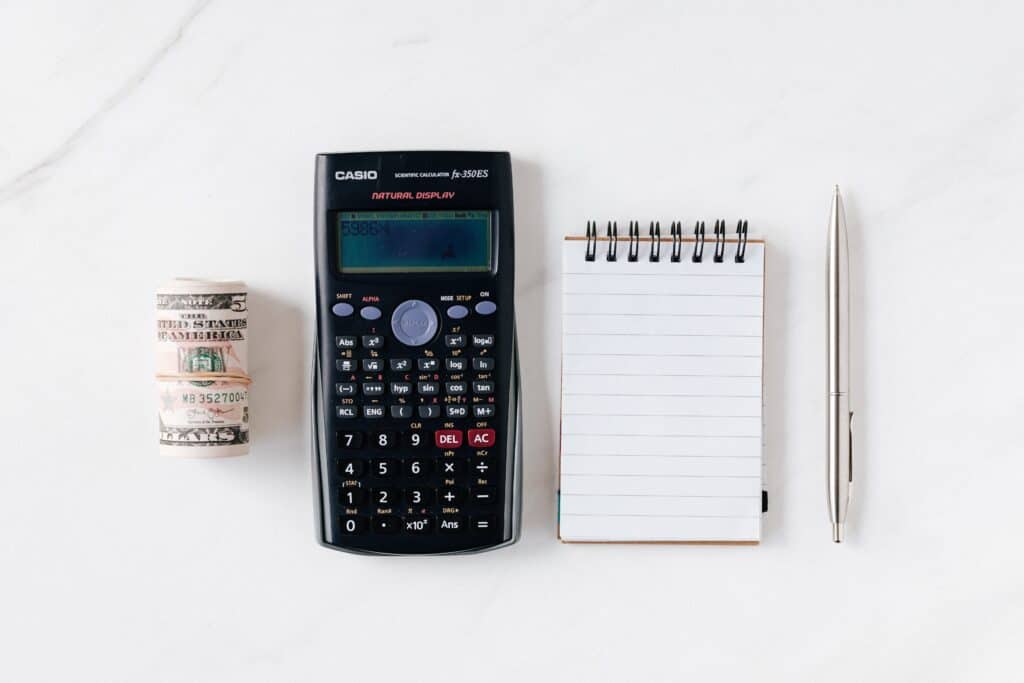Sometimes we need to go back to basics with budgeting and revisit how to make a budget. I will be discussing the different components of a budget and the different budgeting options to choose.
What Do You Mean Budgeting?
We hear the term ‘budget’ constantly in the world of finance and money management, but do we know what budgeting is? You will be surprised to learn that there is more to a budget than a calculation of income minus expenses. Good budgeting requires a symbiotic relationship
Make A Budget With Budgeting Methods and Budgeting Systems
Before we talk about the different budgeting methods, it is important to distinguish a budgeting method from a budgeting system. The budgeting method is the plan, or WHAT you do with your money. If you were to pick a budgeting method, you would choose from the four main budgeting methods: Cash Envelope, Zero-Based, Pay Yourself First, and the 50/30/20 method.
The budgeting system is HOW you deal with your money. In other words, it is how you carry out your finances from day to day. Do you use cash or a debit card? Do you track your expenses electronically or with a written system? This is the difference between a method and a system. Now we are going to discuss the budgeting methods you can choose from.

What Are The Four Budgeting Methods Used To Make A Budget
There are four main budgeting methods to choose from when managing your money: the Cash Envelope Method, Zero-Based Budget Method, and Pay Yourself First Method.
Make A Budget With The Cash Envelope Method
It can be easy to swipe a credit or debit card without acknowledging the amount you are paying. Unlike a credit card that gives you access to more money when desired, you can’t spend cash you don’t physically have. Once the cash is gone, it’s gone. Physically handling cash and giving it to the cashier forces you to count the money you are spending, and quite literally ‘get a handle on your money.’
Pros Of The Envelope Method
- Curb Spending
- Don’t Need To Track Purchases
Cons Of The Envelope Method
- Requires Physical Cash Deposits and Withdrawals Each Month
- Don’t Know What Money Was Spent On Without Keeping a Record of Transactions
Make A Budget With The Zero-Based Budget Method
The idea behind the Zero-Based Budget Method is that the total of your income minus your expenses will equal zero by the end of the month. The design of this method is that every dollar has a purpose. The zero-based budget considers your income and has every dollar accounted for before it is spent. This is great if you are like me and the money gets lost in your checking account once bills are paid.
Pros Of The Zero-Based Budget Method
- Requires Planning In Advance for Upcoming Expenses
- Every Dollar Has A Purpose
Cons Of The Zero-Based Budget Method
- Requires Frequent Monitoring
- Requires Adjustments With Unexpected Expenses
Make A Budget With The Pay Yourself First Method
The Pay Yourself First Method is best described as a traditional budget in reverse. Instead of paying bills first and putting whatever money remains into savings, you put a portion of your income toward your savings (i.e., retirement, emergency fund, etc.) before you pay for anything else. This budgeting method ensures that money intended for saving does not get spent on short-term objectives and that you pay yourself first for long-term objectives.
Pros Of The Pay Yourself First Method
- Pays Future Self
- Not Dependent On Details
Cons Of The Pay Yourself First Method
- Requires Discipline and/or Automation
- Encourages Financial Expertise for How Much to Set Aside
Make A Budget Using The 50/30/20 Budget Method
Most people turn away from the 50/30/20 budgeting method because at first glance the numbers seem to indicate complexity. This is not the case. The 50/30/20 budgeting method represents the categories that make up spending: 50% of your income will go toward necessities, 30% toward wants, and 20% toward savings and/or debt. This is an especially great system if you have fluctuating income. You don’t have to perform recalculations on dollar amounts you are putting towards various accounts; instead, simply apply the percentage amount to the adjusted income/expense to get the new dollar amount for your budget.
Pros Of The 50/30/20 Budget Method
- Numbers Adapt To Income Fluctuations
- Gives You Percentiles To Aim For
Cons Of The 50/30/20 Budget Method
- Don’t Get Detailed Record of Transactions
- Limit of 3 categories: Needs, Wants, Savings/Debts

Budgeting Systems
Most financial experts stop the financial plan at budgeting methods. However, budgeting systems are what carry out the financial plan. Budgeting methods determine where money needs to go; budgeting systems get the money where it needs to go. There are three primary systems you can use to guide where money goes: Pen and Paper, Budgeting Apps, and Bank Management.
Pen and Paper System
The Pen and Paper budgeting system requires no bells or whistles—just a pen and paper. With a pen and paper system you record the date of the transaction, where you purchased the items, and what items were purchased. To take it one step further you can keep a running total of the money you have left to spend in a particular category. If you are one that doesn’t carry a pen and paper on you, then use a notes app on your phone.
Pros
- Quick Start
- Customizable to Your Needs
- Can Add Details to Transactions
Cons
- Consistency is Key
- Must Record and Categorize Transactions Manually
- Perform Calculations Yourself
Budgeting Apps System
Nowadays there are a lot of money management computer programs and apps that make managing money easy. Common apps include EveryDollar, YNAB (You Need A Budget), and Mint. These third-party apps allow you to categorize and label transactions so you can know how much money you have spent in each category and how much you have left to spend. This is similar to a bank management system; however, it is through a third-party that is linked to your bank account.
Pros
- Stays On Mobile Device
- Does Calculations For You
- Links To Your Bank Account
Cons
- Typically Costs a Monthly Fee
- Some Apps Limit Number of Categories for Transactions
- Requires Basic Knowledge of Technology to Use
Bank Management System
If you are looking for an alternative option to using pen and paper or an app, check your bank or local credit union. Most offer money management features for customers to easily track and monitor their spending through the institution itself and not third-parties. This is the method I prefer because I don’t like the idea of using a third-party to input my bank and credit card information into. Nowadays there are lots of security measures in place, but it is just personal preference.
Pros
- Comes At No Cost
- Categorizes Transactions Automatically
- Doesn’t Require a Third-Party App or Service
Cons
- Complimentary Features Can Sometimes Be Inconvenient
- Easy to ‘Set it and Forget it’
- May Be Limitations to the Services Your Bank or Credit Union Offers
How To Make A Budget
So far we have discussed the different methods and systems for budgeting, but how do you make a budget?
Plan
- Calculate Your Net Income- Your net income is your take-home pay. Calculate this by taking your total monthly salary minus deductions. These deductions can be taxes and any employer-provided programs such as health insurance and retirement plans.
- Track Your Spending- Before you decide where your money needs to go, you need to figure out where it is going. The best way to do this is to track your spending. Whether by paper and pen or phone app, you need to see what your money is being spent on.
- Set Goals- Setting goals, both short-term and long-term, is ultimately what brings the value into making a budget. It brings the ‘why’ to what you are doing. The more motivating the goals are, the easier setting and keeping a budget will be
- Make A Financial Plan- The financial plan is what turns your goals into reality. If you want to travel to Europe in a year, what do you need to save each month to get there? Establish spending limits and saving goals
Fine Tune
- Troubleshoot- If your budget still isn’t working, try these budgeting tips
- Make Adjustments Along The Way- You are never, I repeat, NEVER going to have a perfect month. You are supposed to make mistakes in budgeting, because that is how you learn. So instead of striving for perfection, strive to decrease your spending or increase your saving by a small amount each month. After all, it is better to follow an imperfect budget than none at all!
- Focus On Your Spending- This is often overlooked in traditional budgets but I believe this is one of the most important part of the budget: in order to save money, you have to focus on your spending. If you learn your spending habits, you can stop your spending before it happens. Take the Spending Type Quiz to learn your spending habits!
We’ve discussed budgeting elements and how to make a budget, but there is such a thing as choosing the right budget for you. Choosing and making a budget are crucial foundations in a budget—lets talk about how to stick to your budget.



